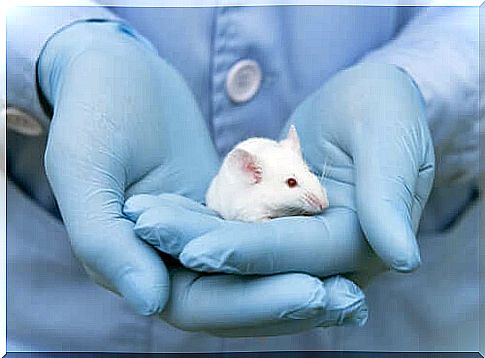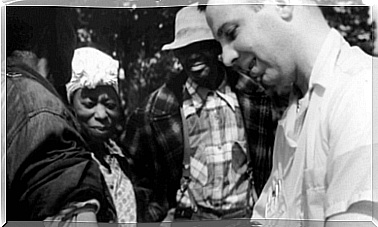The Surprising Experience Of The Rat Park

The rat park experience is one of the most fascinating among those dealing with addictions. Let us first point out that rats were animals frequently used for “psychological experiments”. This is due to the enormous genetic similarity they have with humans. 95% of the genome of mice and humans is the same.
However, the use of rats for research is still done under controlled conditions. That is to say, in the laboratories. Most laboratory animals are isolated in cages, without any contact with the outside world. This is, of course, an unnatural condition for animals of this species.
In the 1960s, rats were used in drug addiction studies. Skinner boxes were also used. These are designed with electrical devices that reward, with food, or punish, with electric current.
This pattern allowed for a study of behavior, at least from the point of view of behavioral psychologists. The rat park experiment was a break with this paradigm. Let’s take a look at the topic in more detail.

Addicted rats
What behaviorists did in the 1960s was to insert a drug delivery device into rats, via surgery. Then, more conventionally, they isolated them in Skinner boxes, that is to say individual cages. They were then taught to squeeze an internal lever on the cage. By performing this action, they then self-administered a substance: psychoactive drugs.
In almost all cases, scientists have used heroin, one of the most addictive drugs around. The point is that every time the rats moved the lever, they immediately received a small dose of the drug. The researchers noticed that some of them, under certain circumstances, or at certain times, repeatedly pulled the lever until they consumed large amounts of psychoactive substances.
Some rats have even gotten to the point of forgetting to eat or drink water. What they haven’t forgotten is the self-sufficiency of heroin. This is why several died during the experiment. The researchers concluded, by analogy, that if people had access to these drugs, they would suffer the same fate as rats.
It was then that Professor Bruce Alexander, accompanied by a group of researchers from Simon Fraser University in Canada, appeared in the painting. They are the ones who proposed the rat park experience.
The rat park experience
Professor Bruce Alexander believed that isolating the rats did not allow objective conclusions to be drawn. All the rats used were albinos, descendants of Norwegian rats. It is a sociable, curious and intelligent species. Being in a cage was not his natural way of life. From this reflection, the idea of experiencing the rat park was born.
What Alexander wondered was if free rats were going to act the same as caged rats too. Is there an innate tendency to addiction? Would the only way out of drug use be death from overdose?
To answer these questions, Alexander began the rat park experiment in 1977. His team first selected two groups of animals. Some would be in conventional laboratory cages, isolated from each other. For the other group, on the other hand, a very large surface was built, 200 times larger than a cage. This space simulated a wooded and natural park.

The interesting results of this experiment
Because the site looked so much like a park, the research was dubbed the Rat Park Experience. To complement it, the researchers took other rats from the outside world to interact with those captive from birth. The point is, cage rats and park rats had access to doses of morphine.
The researchers gave the rats the option of drinking two liquids. One contained morphine and the other did not. They camouflaged the bitter taste of morphine with a sweet solution. After a few days, the caged rats began to prefer the liquid containing the morphine. The rats in the park also drank it, but a few days later.
Caged rats consumed 19 times more morphine than free rats. They seemed to realize the benefits of not using the drug and were reluctant to do so, even if they had tried it before. Alexander and his team introduced variations, making several rats of both groups dependent, but the pattern remained essentially the same.
The rat park experiment showed that social isolation was a determining factor in continued drug use. In turn, the camaraderie and freedom of the park dramatically decreased the desire to take drugs. And when that happened, the affected specimens did their best to return to their normal state, even enduring abstinence syndrome.









